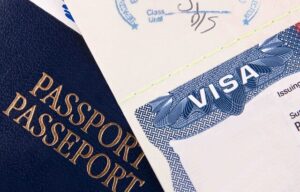
Once you ascertain that you need a Visa to travel to the Schengen Zone, you should prepare your application following the steps below:
Determine what Schengen Visa type you need
Every Schengen Embassy and Consulate issues various Visa types according to the travel purpose and the length of stay.
The most common Visa type is “type C Uniform Schengen Visa (USV)” for short stays in Europe. If you plan on travelling for tourism purposes, you must apply for this type of Visa.
Type C Uniform Schengen Visas can also be single-entry, double-entry, and multiple-entry visas.
Find out where you need to apply
The Embassy or Consulate where you need to submit your application depends on your Schengen destination country (the country you will enter first) or the Schengen country you will spend most days. In some cases, Embassies and Consulates have outsourced the Visa submission to the Embassy or Consulate of another Schengen state or a Schengen Visa outsourcing company.
Find out when you need to apply
Embassies and Consulates can take up to 15 days to process your application.
However, in some cases, the processing time can be longer.
The New Visa Code implemented on February 2nd, 2020, allows you to submit your Schengen Visa application:
Not more than six months before the date you plan to travel to the Schengen Area (the earliest date).
Not less than 15 working days before the date you plan to travel to the Schengen Area (the latest date).
Our recommendation is to submit your application at least three weeks before the date when you plan to travel to the Schengen Area.
Book an appointment
During your Visa appointment, you will have to hold an interview with the Embassy officers, submit your documents, and provide your biometric data. In addition, you will also have to pay the Schengen Visa fee. You should book an appointment before you start collecting your documents. Many Embassies and Consulates cannot book the appointment for you within a short period due to the high Visa demand.
As a general rule, you can book the appointment yourself or book it through a Visa outsourcing company that serves governments and diplomatic missions.
Collect the required documents
The documents you will be submitting are important for your application success. They can determine your Schengen Visa approval or refusal. For most applicants, collecting the required documents is the most confusing part of the Visa application process.
“What documents should I submit?”, “When should I start collecting them?” and “Where should I get them?” are the most frequent questions that Schengen Visa applicants are asking.
To have a clear understanding of the documents you must submit, we suggest you read the following post: Schengen Visa Application Requirements.
You should create a list of the documents you must submit to the Embassy (e.g., Visa application form, proof of subsistence means and accommodation, etc.)
Hold the Schengen Visa interview
On the day of your interview, you will have to answer a set of questions, submit your application, pay the visa fee, and provide your biometric data.
You can read more about the most common Schengen Visa interview questions here.
You can also check out this link to determine how much you need to pay for your Schengen Visa and what payment methods are available.
Providing your biometric data means registering your fingerprints. The Visa officers will store your fingerprints in a Visa Information System (VIS), a central I.T. system available at Schengen Countries’ immigration borders.
Outside of your fingerprints, the system will register your personal information. The VIS system will also store relevant information about the person or institution who has invited you to the Schengen Zone (if any).
Only children under the age of 12 are exempted from providing biometric identifiers.
Wait for an answer from the Embassy
After holding your Visa interview, you must wait up to 15 days to get an answer concerning your application. However, please note that sometimes the process can take longer.
Your Schengen Visa can be either approved or denied.
If your Schengen Visa gets approved – Read the instructions in the letter you received from the Embassy. You will have to return to the Embassy on a specific date to get your Visa sticker attached to your passport.
Please note that you must carefully read your Visa sticker and make sure no error occurred while printing it.
If your Schengen Visa gets denied, know the reasons why they rejected your Visa and try to work on that specific requirement next time you apply for a Visa. There is no particular moment when you are allowed to apply for a Schengen Visa after rejection.


GIPHY App Key not set. Please check settings